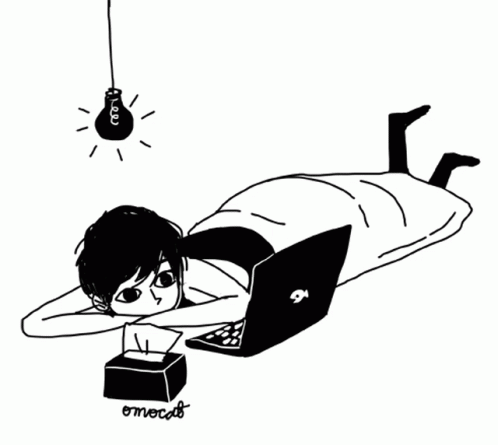About Changemaker The minimalists, Joshua & Ryan, help millions of people learn to live better…
We all have ideas every day, yet do we know how to filter through or manage them effectively? Maybe whitespacing ideas can help us!
Have you ever tried writing down every single thought you have come to your mind?
If you have then, you’d notice two things happening. It’s impossible to keep up, and you’ll actually generate even more tangent-led thoughts as you begin writing down.
Before you know it your relatively simple idea has manifested itself into 4 possible books, 2 apps, and a board game, with notes everywhere and little order to them.
Welcome to the mind of an idea’s person, an expert at developing thoughts and knowledge, but a disaster in knowing how to filter through or implement them.
Why We Need To Let Some Ideas Go
Writing is a wonderful means of capturing your thoughts on the fly, but you also have to be careful it doesn’t overload your mind with too many ideas to process.


We have to learn to ‘let go’ of some ideas, and to ‘whitespace’ for a moment (more on that in a sec) to let them ponder and find a natural order, but also to ensure we don’t just drift off into entirely new directions a day or so after those initial thoughts.
If we don’t then we find ourselves in a spot where we seldom seem to return to them, let alone remember them, and just fall into the same process of new ideas flooding our minds each day – turning (quite quickly) into a few notes into thousands of undeveloped notes.
Therefore, we need to know when to let some ideas just go, and when to do something now before we forget them.
Are We Better Off Giving A Few Ideas Momentum Rather Than Thousands Of Ideas A Few Seconds Thought?
Ideas are (kind of) useless without momentum and structure to follow them, so it’s more important for us to test those ideas and see if they have the potential for momentum.


Generally, if you could write about a topic for hours without pause then you know that idea has lots of potential momentum.
If you are stuck after just a few lines, it probably one to put down in the ‘maybe later’ pile.
It might be that it’s just a complex idea that needs more headspace to make sense of it, but either way, it would still require time investment, so you have to decide whether you have the time to invest it.
Writing works through this ‘flow’ where you push yourself beyond the hurdles that turn up as you write or think creatively, and it’s during this time that you are more likely to work out the solutions to your thoughts as you are writing them.
In writing, you get lost in that ‘day-dreaming trance state’ where you forget time exists and you just get lost in the story. You imagine the story unfold and write it at the same time as you think of it.
This is wonderful if you are actually writing a story, and if you also have the ‘quick adaption‘ ability to stop yourself from time-to-time and organize your thought process and notes before carrying on again.
However, it’s a huge time sap for those who just don’t have the time to get lost within their writing or idea, or who have no logical discipline to help balance.
For those people, a different approach is needed.
Enter Whitespacing. Wait…What Is Whitespacing?
Whitespacing is not to be confused with ‘white space’, but it’s also not so dissimilar. In design the term ‘white space’ is about giving your work (or layout) the room to breathe so it’s not so overwhelming for the reader’s eye to digest and so it draws attention towards the more important information.
When we talk about whitespacing we mean the ‘headspace’ you give an idea to form sense. To go further, it is a mental pause in time and space. It allows our brains the time to digest, absorb and reflect on ideas without having a direct focus on them at that time.


Think of it as having a shower and taking your mind off something as you relax, then suddenly the crossover of ideas you had that day now makes sense.
It’s like ‘idea meditation’ where your brain puts two and two together whilst you aren’t thinking of it.
Too often we think we need to force ideas, but with whitespacing we create a natural breathing space for our minds to take in the stimulus and couple it with our projected idea, before then giving our brain the time to converge both the stimulus and the projected idea from the stimulus.
We might have an idea spring up from something we watch on TV passively, and later converge that with a new idea, only it might not make immediate sense at the time. With pause and whitespacing the ideas can converge and make sense as a new idea or solution.
Whitespacing Ideas: When & How
Whitespacing would be more useful for people who don’t have time to get ‘lost within’, but whitespacing is useful for anyone who has thoughts and ideas flowing but which need clarity or structure.
‘Your brain will be working on the stimulus you present to it’.
Even if you end up having to do some other chores your mind will still be working on trying to formulate sense out of the other stimulus it was presented.
Therefore, it’s a very good idea to break the routine (every day at different times so routine doesn’t imprint and autopilot doesn’t take over) and stimulate your mind into thinking creatively, even just for a little bit, and then to allow yourself to move on to another task afterward (that you might have to routinely do).
You will then find creative momentum builds in the background which is effectively what whitespacing is.
You can effectively whitespace ideas at any time but the heightened times to do so would be after a creative task and even when you are switched to a more routine logical one that you don’t have to think much about. The key is to keep your mind somewhat engaged on the idea in the background, rather than completely detached from it.
That takes practice but can be effectively learned so you can do so without it being a time or energy drain.
If truth be told, we should all let our ideas ‘sit’ a bit through whitespacing, and not place so much immediate energy and focus on writing or thinking of every little thing that comes to our heads.
Yet, we should also ensure our brain is out of ‘autopilot’ mode otherwise we won’t have many ideas come to us at all (as we become more of a follower to our external influences rather than an original thinker who considers the output to the stimulus input).
You can whitespace for too long though and you will just find that you forget the idea completely as your brain has been pulled towards completely different stimulus since then. It’s a background task done whilst you do something else completely, it’s not about day-dreaming or switching off your mind.
A Simple Technique To Help Whitespace Ideas
It’s important to remain somewhat mindful about your ideas, and a good way of doing that is to write it down or record yourself expressing the idea, and to read it back again later that day.
Record yourself expressing an idea and read it back to yourself again later in the day.
When you do write things down you do have that opportunity to read over and redevelop lots of ideas again, and even couple them with other thoughts and develop even better solutions.
Of course, it can depend on whether the idea is any good or not (and that is highly subjective), but with both practice and an understanding of your audience, you will be quicker at working that out.
You might want to read ‘How To Work Out Whether Your Idea Is Any Good Or Not’ for more insight into that.
Not every idea has to be good though, or has to be ‘sold’. It’s absolutely fine to just have any idea come to you and go with it on paper/in mind, as that thought process helps bring out your creativity and might lead into so many more avenues than if you just thought it was a bad idea and passed it by.
This is not to say that there aren’t ‘bad ideas’ though. There are plenty of bad ideas out there – some of which are complete time-wasters for yourself, for teams brainstorming together (which is actually a bad idea in itself – here’s why), and for society in general.
Yet, when you are seeking to expand your creative mind then reserving judgment (on yourself and others) and ‘green-lighting’ are absolutely necessary towards waking up that genius within you (and the genius may ultimately know which ideas are worth pursuing or not!).
How Whitespacing Will Help Us Decide On The Right Ideas
Should you just get on with a promising idea and do it now anyway before it is forgotten?
Well, note it down briefly if possible so it can be respawned later, but just like how we have far too many tasks on our to-do lists these days (leading to the ‘precrastination’ of only tackling the arguably pointless and easier ‘low-hanging-fruit’ to ‘appear’ like we are getting things done), we have to learn to ‘let go’ of some and focus on ‘the few’ that feel stronger within us.
With too many ideas floating around on our ‘idea to-do list’ and it will also lead to time-wasting rather than actual progression.
We shouldn’t rely on technology to filter our lists and ideas for us either.
Despite technology apparently making our life easier and more efficient, we end up wasting far more time simply attempting to organize our ideas or tasks in daily life than we do actually doing something with them. Automating can be an ironic time sap.
Todo lists are generally logically-led tasks. Ideas function in a different way, so to expect ideas to be organized the same way wouldn’t help us. Notes would help store the ideas but processing them to solutions requires a different approach.
Letting our minds go into white space mode will naturally help us gravitate towards the ideas that have the most promise and meaning to us, so we should give our minds space and it will literally thank us for it through added clarity.
We will end up having more energy on the ideas that matter, and more focus and urgency towards those, and a much better ‘inner-filtration-system’ as a result.
We may think we might ‘miss-out’ on a good idea if we don’t pursue all of them, but we are more likely to just become overwhelmed, leading our minds to think sub-optimally.
Our best bet is to function as optimally as possible, and to do so we need to optimize and utilize our time, energy, and space the best we can. Whitespacing is a technique that helps us do just that.









